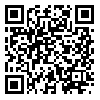Background and purpose: Temporomandibular disorders (TMD) are manifested as a group of signs and symptoms diagnosed by pain, and malfunction of temporomandibular joint (TMJ) and masticatory muscles. The role of etiologic factors such as stress and occlusal interferences has gained much attraction. In this study, we assessed the incidence of TMD and its relationship with stress and occlusal interferences in individuals attending Sari Dental School Clinic, 2014-2015.
Materials and methods: In this descriptive-analytical study 68 people (41 females and 27 males) were selected. Occlusal interferences were assessed by clinical examinations and the stress levels of the participants were determined by The Taylor Manifest Anxiety Scale (TMAS). The relation between TMD and other variables were analyzed by Chi-square and exact fisher tests. Data was analyzed in SPSS V. 22.
Results: Of the total population studied 51 (75.0%) had TMD. Among TMD patients one (1.9%) had low-level stress, 30 (58.8%) had moderate-level, and 20 (39.2%) were found to have high-level stress. No significant relationship was found between TMD and stress. In TMD group, 13.7% did not have centric interferences; 70.6% showed interferences up to arch of closure, and 15.7% had interferences up to line of closure. Significant relationships were found between TMD and interferences of working side (P<0.03), protrusions (P<0.0001), arch of closure interferences (P<0.03), and interferences of nonworking side (P=0.01).
Conclusion: Temporomandibular disorders were found to be more prevalent among the population studied. No relations were found between TMD and stress while TMD incidence was related to some occlusal interferences.
(Clinical Trials Registry Number: IRCT2014113020158N1)
| Rights and permissions | |
 |
This work is licensed under a Creative Commons Attribution-NonCommercial 4.0 International License. |


